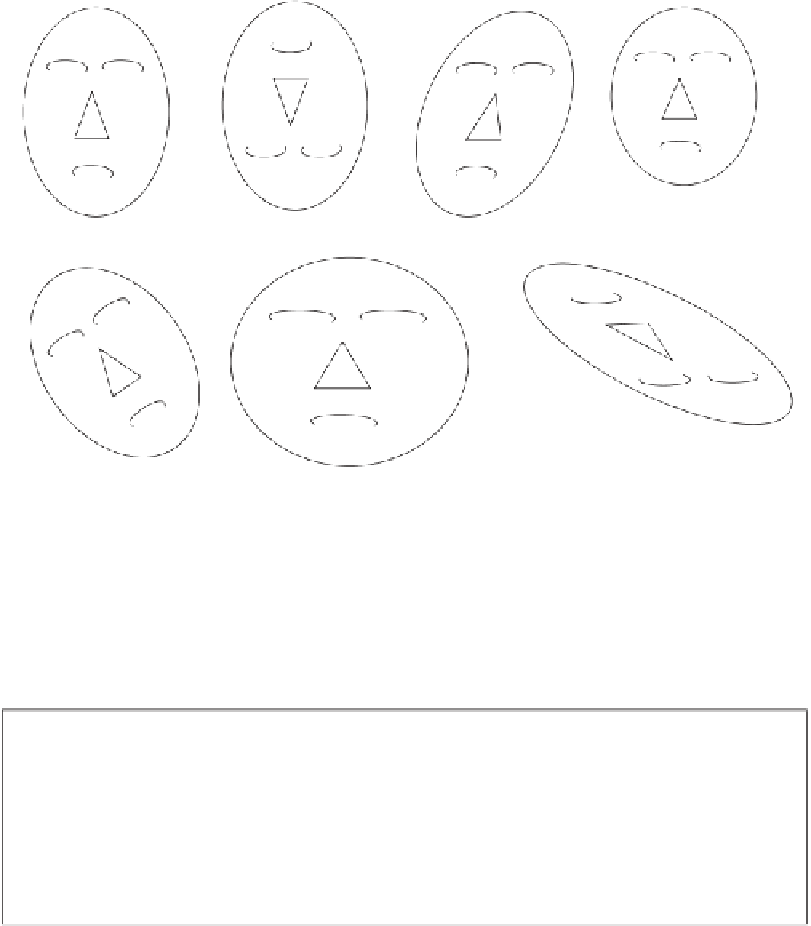Graphics Programs Reference
In-Depth Information
1.2 Two-Dimensional Transformations
In practice, a complete two-dimensional image is constructed on the screen object-by-
object and it may be edited before it is deemed satisfactory. One aspect of editing is
to
transform
objects. Typical transformations (Figures 1.1 and Intro.1) are moving or
sliding (translation), reflecting or flipping (mirror image), zooming (scaling), rotating,
and shearing (distorting).
Original
Y reflected
Sheared
Y scaled
Rotated
X scaled
Reflected and sheared
Figure 1.1: Two-Dimensional Transformations.
The transformation can be applied to every pixel of the object. Alternatively, it
can be applied only to some key points that fully define the object (such as the four
corners of a rectangle), following which the transformed object is constructed from the
transformed key points.
As soon as we use words like “image,” we are already thinking of how one shape cor-
responds to the other—of how you might move one shape to bring it into coincidence
with the other. Bilateral symmetry means that if you reflect the left half in a mirror,
then you obtain the right half. Reflection is a mathematical concept, but it is not
a shape, a number, or a formula. It is a
transformation
—that is, a rule for moving
things around.
—Ian Stewart,
Nature's Numbers
(1995)

Search WWH ::

Custom Search